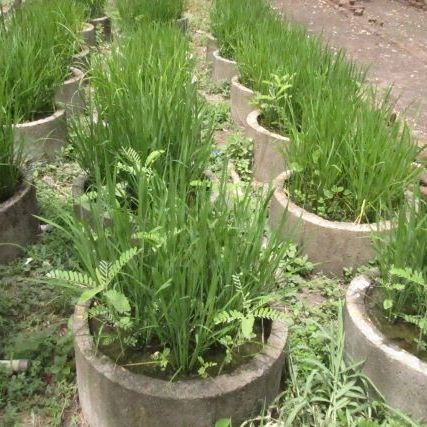


Digging of the pond, rice cultivation experiment and new biogas tank.
Besides the normal farm operations, we have been engaged with various projects in the past week.
Tarun is busy putting a periphery bund around a piece of forest land Annapurna acquired through a land exchange many years back. The land is a bit over one acre and is located in the very far North corner of the farm. We are digging a small water catchment pilot and with the soil which comes from the hole we are building a bund around the land.
We can do this work because of a generous well-wisher who sees the importance of protecting and greening the land.
Then we stumbled upon an interesting way of rice cultivation on the Internet which is practiced in northern Thailand. Madhuri is doing experiments in pots to test the viability of the system so we have a better idea how to implement it when the paddy season starts. We hope this method will help us make steps forward in using less labor in the paddy cultivation. Labor is by far the primary cost in rice cultivation and prices keep going up fast while labor availability is dwindling.
Another ongoing project which moved forward was the installation of an additional biogas tank. A few months back we got a second-hand biogas digester from Ravena (a greenbelt community in Auroville). Andre and his team have been busy fixing and repainting it. Yesterday we put it in the ground and in the next weeks we hope to get it all fixed and connected to the dairy and fruit processing facility. They’re all small steps but very important and it’s satisfying to see things coming to fruition after often very long preparations.

